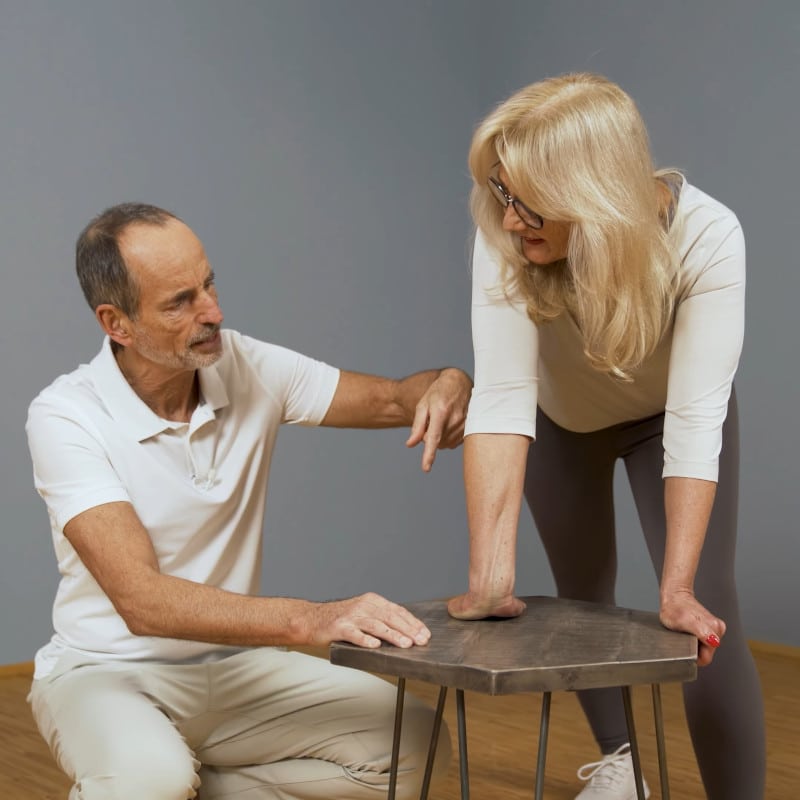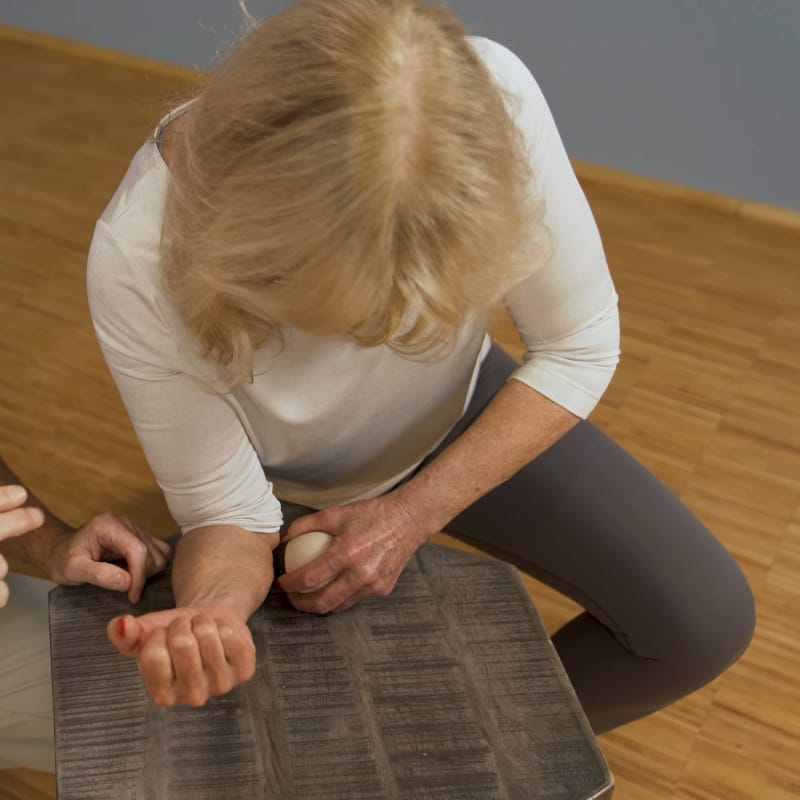wrist Pain exercises
Body Part:
Wrist & Hand
Equipment:
Osteopressure Tool
Level:
Beginner
Body Part:
Wrist & Hand
Equipment:
Osteopressure Tool
Level:
Beginner
Our wrists never seem to stop working. We spend our days typing on keyboards, texting and scrolling on our phones, and gripping countless objects. Considering how much we use our wrists, it’s no surprise that pain, weakness, fatigue, or tingling hands are common problems. We’ve developed a 3-step routine that can help relieve wrist discomfort. All you need to perform our exercises is the spherical handle from our Osteopressure tool set and a table. You can use a wine cork if you don’t have our Osteopressure tools. Jump to our routine or keep reading to learn more about the wrist and common causes and symptoms of wrist pain.
Your wrist can bend forward and backwards, side to side, move up and down, straighten, and rotate — all thanks to a team of bones, ligaments, and tendons.
The wrist attaches your hand to your forearm, which is made up of two bones: the ulna (on the pinky side of the forearm) and the radius (on the thumb side). The ulna and radius are connected to the hand bones (called metacarpals) by two rows of carpal bones. Each row consists of four bones: the row closest to the radius and ulna is the proximal carpals, and the row closest to the metacarpals is the distal carpals. The bones in your wrist are connected by tough cords called ligaments; the bones are attached to muscles by tendons. There are three types of tendons in the wrist: wrist flexors, extensors, and tendons that help the fingers flex and extend.
Three nerves run from the shoulder through the wrist into the hands and fingers. These nerves provide sensation.
Because our wrists are so complex and get more than their fair share of wear and tear, these joints are prone to injury. Common wrist injuries are:
Your wrist pain may be because of a condition. Common conditions that cause wrist pain include:
Visit our shop to get your Osteopressure tool set. Be sure to take a look around. We’ve got lots of pain-relieving tools and products waiting to be added to your cart.
Take me to the shop.
You’ll need a table or chair for this exercise and the next.

If the surface you’re stretching on is too hard, put a towel under your hand.

You’ll need the spherical handle with the flat attachment from our Osteopressure tool set or a wine cork for this exercise.
Perform our wrist exercises 6 days a week for a 3-week sprint. When you feel less pain in your wrist, you can adjust how often you exercise.

Take the pressure off of your median nerve with this 10-minute routine carpal tunnel syndrome relief routine. No more tingling or numbness in your hands.
Relieve Carpal Tunnel PainIf your elbow hurts, consistently stretching your arm can help manage the pain. This 2-step routine takes just 5 minutes. Your elbow will thank you.
Manage Your Elbow PainRepetitive movements and overwork can inflame the tendons in your wrist, causing wrist tendonitis. Relieve the pain, burning, and numbness with this 3-minute routine.
Try Now